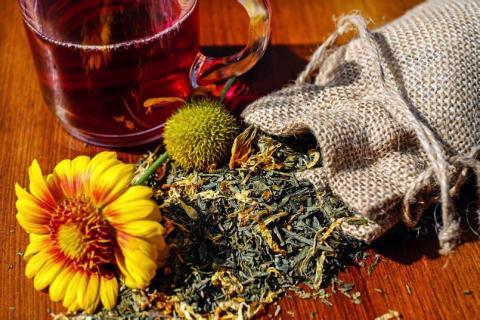
Poultices are some of the most interesting medicines. A poultice is a warm medicated dressing. To make a poultice, you just crush up different plants, herbs, and other healing medicinal items into a paste and apply to the affected area. It really is one of the simplest medicines to make, with incredible results.
Poultices can be used for a variety of ailments. They have been a go-to from Mother Nature’s Medicine Cabinet for thousands of years and that’s because they work and are easy to make – if you know what to use. You can create poultices to help with inflammation, pain, infections, chest colds, and much more. This article breaks down the 5 most common uses for a poultice and some of the plants and herbs that are effective in them.
5 Common Uses For Poultices & The Medicines That Make Them
Inflammation & Swelling
Castor Oil: Reduces inflammation and swelling from rheumatism.
Comfrey: Reduces swelling.
Marjoram: Eases inflammation.
Witch Hazel: Reduces swelling of tissues.
Marshmallow: Reduces inflammation.
Drawing Properties
White Cabbage: Draws out infection and poison.
Figs: Brings boils to a head.
Garlic: Draws out poisons, infection, and pus.
Potato: Draws infection out of boils.
Oatmeal: Draws out foreign objects such as splinters, stingers, etc.
Marjoram: Draws infection out of abscesses.
Aches & Pains
Apple Cider Vinegar: Soothes achy, sore muscles.
Ginger: Eases sore feet and relieves pain.
Marjoram: Reduces tooth and ear pain, as well as pain caused by inflammation.
Flaxseed: Eases general pain.
Chest Congestion & Sore Throats
Marjoram: Relieves pain from a sore throat.
Mustard: Reduces chest congestion.
Apple Cider Vinegar: Eases sore throat.
Sage: Reduces chest congestion (produces a similar effect as vapor rub).
Cuts, Bruises, & Wounds
Arnica: Heals bruises. [NEVER USE on open wounds.]
Carrots: Heals sores, scrapes, and bruises.
Witch Hazel: Helps clean and heal cuts, scrapes, and bruises.
Apple Cider Vinegar: Cleans and heals cuts and scrapes.
Comfrey: Heals bruises and sores.
Slippery Elm: Can be used for packing wounds, cuts, and scrapes.
Sage: Helps ease pain caused by wounds.
Plantain: Heals cuts and scrapes.
With spring on its way many of us will be opening the house up and airing it out. Eventually, we may begin spring-cleaning in the house and in the barns which will undoubtedly mean we will wake the spiders. Here’s a quick spider bite poultice I have used on brown recluse bites.
Spider Bite Poultice
1 Tablespoon Dried Powdered Plantain Leaf [for healing]
½ Tablespoon Activated Charcoal Powder [for detox and poison antidote]
½ Tablespoon Aztec Clay [for drawing & healing]
1 Tablespoon Ground Flaxseed [for pain relief]
Hot Water, enough to make a paste
Mix all of your ingredients together, using a stone or marble mortar and pestle to make cleanup easier if you prefer. Once your mixture is blended into a smooth paste you can apply it directly to the spider bite or, if you prefer, spread it between a cheesecloth and bandage it to the affected area. You may find you get faster results by placing it directly on the skin. You can apply this poultice every 3 hours but you must leave it on for at least 20 minutes each time for the best results. You may see the bite begin to heal in as little as 3 days (this might be expedited by increasing vitamin C and antioxidant intake as well).
The power of poultices can be incredible, helping to heal minor issues, as well as major ones. Always do your research before trying anything new. Becoming a pro at making poultices can be incredibly easy as long as you are familiar with the ingredients within Mother Earth’s Medicine Cabinet!








